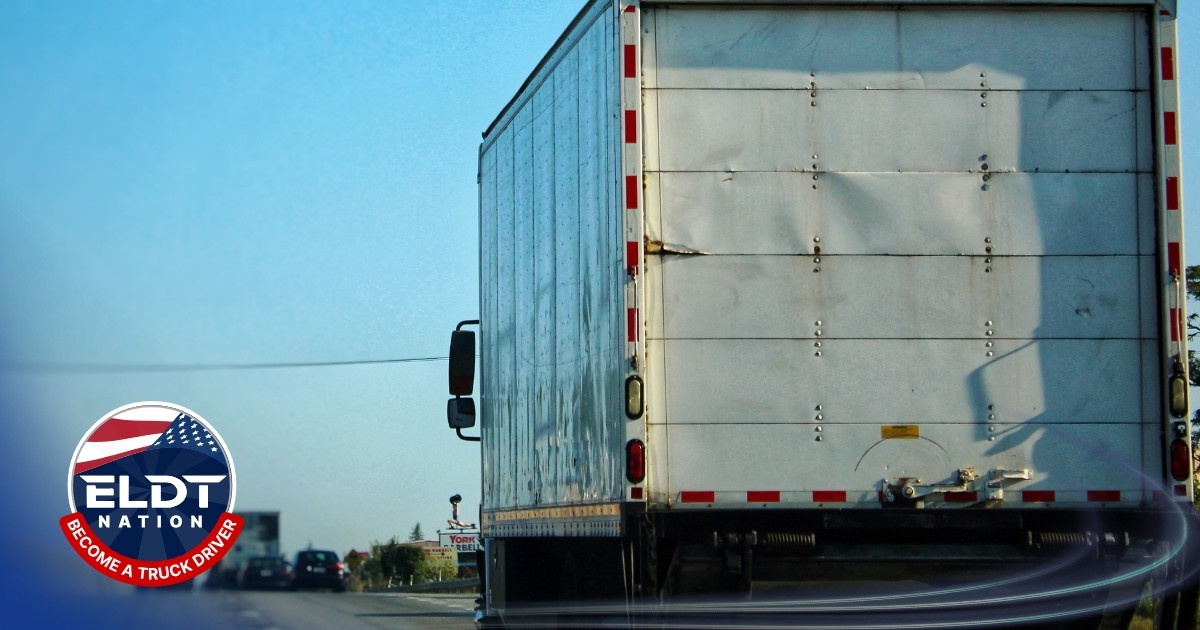US Truck Driver Shortage 2025: Causes, Data & What It Means for Your Pay
America’s highways tell the story of its economy.
Every product on a store shelf, every raw material at a factory, and every meal delivered to your door has one thing in common - it likely spent time on a truck. Yet in 2025, the very system that keeps shelves stocked and businesses running faces a growing challenge: there simply aren’t enough drivers behind the wheel.
Is There Really a Driver Shortage?
Why “there’s no shortage” arguments exist (capacity counts, weak freight)
The capacity narrative
Skeptics point to metrics like total active authorities, tractors registered, or the raw count of CDL holders and argue the U.S. has plenty of driver capacity. They also note that from late 2022 through 2024, freight demand was comparatively weak, spot rates were depressed, and carriers competed for limited loads-conditions inconsistent with an absolute labor shortage.

Key Numbers You Need to Know (Data Deep-Dive)
Employed drivers vs. estimated need (multi-year perspective)
The topline employment figure obscures the real constraint. In 2023, 3.54 million truck drivers were employed in the United States (all segments). Yet the industry’s effective need is higher than that number suggests because not every CDL holder can be seated in a tractor tomorrow. Several structural filters- medical qualification, safety/compliance status, insurance underwriting, and experience requirements- shrink the hireable pool, particularly for long-haul roles.
Looking ahead, trade groups and benchmarking firms converge on the scale of replacement demand: the industry will need to hire roughly 1.2 million new drivers over the next decade just to backfill retirements, health-related disqualifications, and chronic churn. That is replacement demand, not net growth. In other words, even if freight volumes were flat, fleets still need a steady inflow of qualified drivers to keep seats filled.
Why this matters: When the economy tightens, it can look like there’s no shortage because total headcount and dormant authorities appear ample. But as freight normalizes, the constraint isn’t the existence of drivers; it is the availability of experienced, insurable drivers willing to run OTR - and that is where the gap reappears first.
Estimated shortage ranges heading into 2025
Through 2024, estimates placed the shortage in the ~60,000–82,000 range, with some mid-year snapshots citing ~78,000. Different methodologies produce different points in the band, but the directional takeaway is consistent: as demand firms, a non-trivial gap opens between the number of trucks fleets want to run and the number of qualified drivers available to run them.
Why this matters: Shortage ranges of this size do not uniformly raise rates across every lane. Instead, they pinch specific segments (irregular-route OTR, certain regional networks) and specific qualifications (e.g., Hazmat, Tanker) first - where you tend to see sign-on incentives, guaranteed pay blends, and above-trend base-pay adjustments.
Turnover rates for long-haul at large carriers and why it matters
Turnover among long-haul drivers at many large carriers routinely averages above 90% annually. That figure does not mean every driver quits the industry; it reflects seat-by-seat churn. Still, the operational consequences are profound:
- Lost miles and utilization: Every unseated tractor suppresses revenue and network reliability. Training replacements and re-seating units absorb dispatch and safety bandwidth.
- Higher recruiting spend: Fleets spend heavily on advertising, orientation, travel, and training. Those costs do not create new capacity; they mostly offset churn.
- Experience drain: High churn keeps the proportion of experienced drivers low. That matters because insurance, safety performance, and premium freight typically favor drivers with 12–24 months of verified experience.
Why this matters for pay: When turnover stays elevated, wage pressure is persistent - especially when freight tightens. Fleets pay more to attract and keep proven drivers, and they restructure pay (hourly blends, guarantees) to stabilize income and reduce the incentive to leave.
Average driver age and implications for retirements
Industry averages vary by data source and segment, but the average driver age consistently skews older than the overall U.S. workforce - commonly cited in the mid-40s to low-50s. Some datasets report ~46 as the typical age; others, looking at narrower long-haul cohorts, place the average closer to the low-50s.
- Retirement bulge: A larger cohort is approaching retirement relative to younger entrants, which elevates annual replacement needs.
- Health attrition: Musculoskeletal issues, sleep apnea non-compliance, and other medical disqualifiers sideline large numbers of drivers each year. Even temporary disqualification can cascade into prolonged gaps if dispatch consistency or benefits are disrupted.
Why this matters for pay: As retirements and medical DQs remove experienced drivers, fleets face a steeper curve to keep premium freight covered. In tightening markets, that scarcity translates into higher pay for experience, especially where endorsements or specialized handling are required.
Drug & Alcohol Clearinghouse impacts on the active driver pool
Since early 2020, the federal Clearinghouse has sidelined well over 180,000 drivers, and more than 270,000 drivers have received at least one violation. Only a portion complete the return-to-duty process. Many fleets, particularly those with strict underwriting or high-value freight, will not hire drivers with Clearinghouse histories even after RTD.
Why this matters: The Clearinghouse permanently tightened the supply funnel. It improves safety and transparency, but it also removes a meaningful number of otherwise licensed drivers from the competitive pool - raising the value of compliant, clean-record drivers and contributing to sustained wage pressure when demand rebounds.
Training funnel realities (ELDT, CDL schools, minimum experience screens)
The post-2022 training regime is more standardized and visible, but bottlenecks remain:
- ELDT split: Entry-Level Driver Training has two parts - theory (often completed online) and behind-the-wheel (BTW) with a registered provider. Theory completions can scale, but BTW capacity is constrained by instructors, equipment, and scheduling.
- School throughput & pauses: During slow markets, fleets commonly dial back sponsorships and entry-level hiring, shrinking the pipeline of rookies advancing into the 12–24-month experience band in the following year.
- Minimum experience filters: Many carriers (and their insurers) require 1–2 years of verifiable experience. That screens out most rookies from the better schedules and steadier pay, and it concentrates competition for a relatively small pool of proven drivers.
- First-120-day churn: New entrants who do land OTR roles often face the steepest learning curve - unpaid dwell, irregular home time, and lifestyle shock. Early churn is high, which interrupts the flow of rookies maturing into the experienced tier the market values most.
Bottom line: The training pipeline is not a tap you can turn on. It takes time to move a cohort from theory completion to BTW, then through the first year of real-world operations. That lag is why wages typically move before headcount expands materially when freight tightens.
Why Is the Shortage So Stubborn? (Causes With Operator-Level Detail)
Aging Workforce & Health Attrition
Age profile mismatch vs. the broader labor market; retirements and medical DQs
Trucking draws disproportionately from older cohorts compared to the general workforce. As a result:
- Retirements run hot: A larger share of drivers hit retirement age each year, and many exit with decades of route knowledge that cannot be replaced quickly.
- Medical disqualifications are common: Sleep apnea non-compliance, cardiovascular risk factors, and orthopedic injuries sideline drivers. Some return; many do not - particularly if time off breaks income continuity or benefits eligibility.
For fleets, that means constant replacement hiring just to stand still. For drivers who maintain medical fitness and clean records, it means durable bargaining power, especially in segments with demanding schedules or higher safety expectations.
.jpg)
Pandemic Aftershocks
Early retirements; training/testing disruptions that thinned cohorts
The 2020–2021 period accelerated exits:
- Early retirements: Health concerns and pandemic-era volatility pushed older drivers to leave sooner than planned.
- Training & DMV bottlenecks: CDL schools, test sites, and in-person instruction faced closures and backlogs. Many prospective drivers delayed or abandoned their path, which shows up two to three years later as a thin band of candidates with 12–24 months of experience.
These aftershocks are fading but not gone. 2025 still reflects the missing cohorts from that period - one reason experienced drivers remain scarce relative to demand.
Recruiting Pipeline Constraints
21+ interstate rule; two-year experience filters; first-120-day churn
The pipeline narrows at each step:
- Age floor: Federal rules require drivers to be 21 or older to operate interstate. That eliminates the immediate post-high-school pathway many trades rely on, pushing potential entrants into other fields or delaying entry.
- Insurance & fleet policies: Many employers require 12–24 months of experience for OTR seating due to underwriting. That confines rookies to a small subset of jobs - often the least attractive in terms of home time and schedule - raising early churn risk.
- Early-career churn: The first four months are perilous. New drivers encounter the realities of detention, variable miles, and life on the road. Without thoughtful onboarding (mentorship, predictable pay floors, fair dispatch), many exit - depleting the very pipeline needed to ease the shortage.
For drivers who persist through this phase, earning power rises quickly: clean inspections, a safety-first record, and endorsements create access to better lanes and higher, more stable compensation.
Work Design & Lifestyle Frictions
OTR home time realities; unpaid work hours; detention and dwell
Two design features keep OTR roles hard to staff and retain:
- Home time: Irregular-route OTR often means infrequent, unpredictable nights at home. As other sectors (dedicated, regional, last-mile) expand, drivers can find similar pay with better schedules elsewhere.
- Unpaid labor: Much of a driver’s workday is not strictly “driving.” Detention at shippers/receivers, dock work, and appointment rigidity can turn eight paid hours into a twelve-hour day with the same paycheck. Unless fleets layer in detention pay, hourly blends, or guarantees, the income instability fuels churn.
When freight tightens, fleets that attack detention, protect driver time, and guarantee floors are the ones that stabilize retention without simply outbidding rivals on cents-per-mile.
E-commerce & Last-Mile Magnet
Shift toward local/regional driving; competition for CDL talent
The growth of e-commerce and regional distribution reshaped CDL job mix:
- Local and regional jobs multiplied: Parcel, last-mile, and dedicated routes offer predictable start times, daily home time, and simpler duty cycles.
- Talent flows away from OTR: Even if OTR offers a higher nominal cpm, many drivers will trade cents-per-mile for predictability - a rational choice that drains candidates from the very segment where shippers feel shortages most acutely when demand increases.
For OTR fleets, the response in 2025 is clear: regionalize where possible, expand drop-and-hook, and design relays that put more drivers home more often - paired with compensation that recognizes all working hours, not just driving time.
Compliance & Safety Filters
Clearinghouse sidelining; insurance/underwriting constraints on rookies
Safety and compliance policies are tightening the pool - by design:
- Clearinghouse: With well over 180,000 drivers sidelined since 2020 and 270,000+ with violations recorded, the Clearinghouse permanently reduced the practical supply of hireable drivers. Only a fraction complete RTD; many fleets won’t consider them even then.
- Insurance and nuclear verdict risk: Underwriters strongly prefer clean, experienced drivers. For many fleets, that translates into hard filters (e.g., no fewer than 12–24 months’ verifiable experience; limited tolerance for moving violations). These screens are not cyclical - they persist through the cycle, keeping the qualified pool constrained even in soft markets.
Implication for drivers: Maintaining a clean MVR, CDL compliance, and medical fitness meaningfully increases earnings potential and job choice. Implication for fleets: Safety investments and structured mentorship to move rookies safely into the 12–24-month tier are not optional; they are the only scalable path to resilience.
.jpg)
What It Means for Your Pay in 2025 (Actionable Guidance)
Pay Mechanics 101
How driver wages track rates, capacity demand, turnover, and supply constraints
Think of wage movement as the sum of four pressures:
- Rates: As spot and contract pricing rise, carriers can afford higher labor costs per mile/hour.
- Capacity demand: When shippers ask for more trucks than carriers can staff, carriers raise pay to seat equipment and protect service KPIs.
- Turnover: High churn makes retention cheaper than perpetual recruiting, pushing fleets to add guarantees and bonuses.
- Supply constraints: Experience requirements, Clearinghouse impacts, and medical DQs keep the hireable pool tight, concentrating raises on proven, compliant drivers.
How to estimate your effective hourly pay
Even if you’re paid CPM, your effective hourly depends on dwell and detention:
- Track on-duty not driving (dwell/detention/dock) weekly.
- Confirm detention triggers and rates in writing.
- Use a simple worksheet: total weekly pay ÷ total on-duty hours (driving + on-duty not driving). If the number falls below your target, push for guarantees or hourly blends.
Key policy clauses to audit in any offer
- Detention: Trigger time, pay rate, max hours payable, auto-approve vs. shipper approval.
- Layover/Breakdown: Daily rates and qualifying conditions.
- Home-time commitments: Written windows, penalties if missed.
- Pre-plan ratio & trailer pool: A higher trailer ratio and >1 pre-plan consistently mean fewer dead hours.
2025 Outlook by Role
New Entrants: Realistic first-year expectations; the experience bottleneck
- Where you’ll start: Most rookies begin in OTR irregular or lower-choice regional seats. Expect live loads, variable schedules, and a learning curve on macros, time management, and shipper etiquette.
- First-year objective: Reach 12 months with a clean record. That unlocks better carriers, dedicated/regional seats, and higher guarantees.
- How to compress time-to-earnings:
- Earn endorsements early (Hazmat, Tanker, Doubles/Triples). These open lanes and premium opportunities.
- Choose fleets with mentorship programs, clear detention policies, and guaranteed weekly pay to stabilize income during the learning curve.
- Track dwell and submit detention accurately; learn your customers to reduce wait time.
- Avoid early job-hopping; each reset restarts probation and delays access to better seats.
Experienced OTR Drivers: Leverage points when demand rebounds
- Leverage your experience and clean MVR. That is where raises concentrate first.
- Target carriers with:
- Documented detention auto-pay and trailer pools.
- Pre-plan transparency (ask for historical pre-plan rate).
- Regional relay options that increase utilization without sacrificing miles.
- Negotiate more than CPM: Weekly guarantees, accessorial floors, and lane commitments often add more to take-home than a small CPM bump.
Regional/Dedicated/LTL: Stability vs. ceiling; where guarantees and hourly pay show up
- Regional/Dedicated: Expect hourly + stop pay or CPM + robust accessorials, predictable start windows, and stronger home-time guarantees. Raises are steady; the ceiling is lower than OTR in a breakout market, but volatility is far lower.
- LTL: Hourly with overtime potential, pension/benefits in many shops, and strict safety culture. Career earnings are competitive, with high schedule predictability and a clear bid system for runs.
Owner-Operators: Rate risk, fixed costs, and when to sit tight vs. expand
- Sit tight when: Spot < total cost per mile (TCM) + target margin; diesel and insurance are elevated; maintenance backlog is growing. Focus on cost control (fuel programs, tire contracts, PM intervals) and high-acceptance contract freight that pays fuel surcharge cleanly.
- Expand when: Multi-month evidence of spot > TCM + margin, contract awards are lifting, and you have cash reserves for insurance down payments and major component risk (DPF, injectors, transmission).
- Non-negotiables: Use a lane P&L, not a truck P&L. Evaluate deadhead %, average dwell by customer, fuel network coverage, and pay-to-detention compliance before committing to any contract.
Where the Raises Are Most Likely
Market-Level Hotspots
Raises cluster in freight-dense regions with appointment complexity and chronic dwell issues (major port arcs, border crossings, ag harvest corridors, construction-heavy metros). Watch for:
- Carriers adding guarantees to cover dwell-heavy lanes.
- Shift differentials (nights/weekends) and weather premiums in winter-affected markets.
- Regional relays that trade CPM for predictable weekly guarantees.
Endorsements and Qualifications That Command Premiums
- Hazmat (H/X): Higher scrutiny, specialized lanes, premium accessorials. Many fleets pay an H-premium on all miles or higher rates on H-loads.
- Tanker (N/X): Additional handling risk and training; often guaranteed hourly or CPM + activity pay with stronger detention language.
- Doubles/Triples (T): LTL linehaul and specialized carriers value this endorsement; it expands your bid options and overtime potential.
- Passenger/School Bus (P/S): Outside freight trucking, but relevant for CDL holders seeking schedule predictability and community-based work.
Labor-Intensive Lanes and Jobs
- Foodservice, beverage, and route-delivery with driver unload pay (by stop, by case, or by cart). Physically demanding but consistently higher effective hourly because you’re paid for the labor, not just the miles.
- Flatbed/securement-heavy freight: Tarping and complex securement add activity pay; weather and safety requirements often include premiums or minimums.
.jpg)
Entry-Level Drivers - How to Actually Break In (and Stick)
Breaking into trucking in 2025 requires more than just passing a test and taking the first job that comes along. With regulatory hurdles, lifestyle challenges, and a highly competitive labor funnel, new drivers need to plan carefully to succeed and build a foundation for long-term earnings. Below is a structured, step-by-step guide.
Pathway That Works in 2025
Step 1: Complete ELDT Theory Training
All new drivers must complete Entry-Level Driver Training (ELDT) theory through an FMCSA-approved provider. This covers federal regulations, vehicle inspection, road safety, and cargo securement. The provider submits your completion to the FMCSA’s Training Provider Registry (TPR).
Step 2: Behind-the-Wheel (BTW) Training
Once theory is complete, you must train with a registered BTW provider. This hands-on training covers vehicle operation, maneuvering, and real-world road skills. Many drivers underestimate this stage - it’s where the foundation for safe, efficient driving is built.
Step 3: First Job Strategy
The first seat matters. While many rookies jump into long-haul OTR, the better strategy is to start in dedicated or regional roles where possible. These jobs typically have steadier schedules, less lifestyle shock, and better support systems. This helps you accumulate the all-important 12 months of safe experience that unlocks higher-paying opportunities later.
Choosing the Right First Seat
Balancing home time and skill growth
- OTR irregular route may look attractive for quick miles, but turnover is brutal.
- Regional or dedicated work often pays slightly less per mile but provides predictable schedules and allows rookies to build skills without burning out.
Avoiding churn traps
Job-hopping early sets back your progress. Many fleets reset probationary periods when you switch, delaying access to bonuses and better schedules. Commit to at least one year with a single employer, unless working conditions are truly unsafe.
Reading the pay plan fine print
- CPM only: Check average weekly miles and utilization; low miles make high CPM meaningless.
- Hourly/Guaranteed: Increasingly common in regional and dedicated roles, this provides stability against detention and dwell.
- Hybrid pay structures: Blends of CPM, detention pay, and stop pay - these can be excellent if the carrier enforces detention policies aggressively.
Endorsements With the Best ROI
Not all endorsements pay equally in your first year. Focus on those with fast payback and broad employer demand.
- Hazmat (H): High demand, especially in fuel, chemicals, and mixed-freight carriers. Many fleets offer Hazmat bonuses or higher CPM on all miles, not just H loads.
- Tanker (N/X): Increases your eligibility for bulk liquid freight. Tanker-qualified drivers are often harder to find, giving you leverage early.
- Passenger/School Bus (P/S): Useful for those considering passenger transport, transit, or school systems. Less lucrative in freight but offers stability and daily home time.
Pro tip: Many carriers will reimburse or bonus drivers for earning endorsements. Align timing with an employer who covers the cost.
First-Year Survival Guide
Your first year is about more than pay - it’s about building a reputation as safe, reliable, and resilient. These habits keep you employed and set you up for raises.
The numbers are clear: retirements, health attrition, and regulatory constraints will keep tightening the driver pool for years to come. That means higher bargaining power for skilled drivers and more opportunities for new entrants who can navigate the first difficult year without giving up. Wages are trending upward, benefits are expanding, and employers are finally being forced to listen to what drivers want - predictable pay, more home time, and better conditions on the road.







